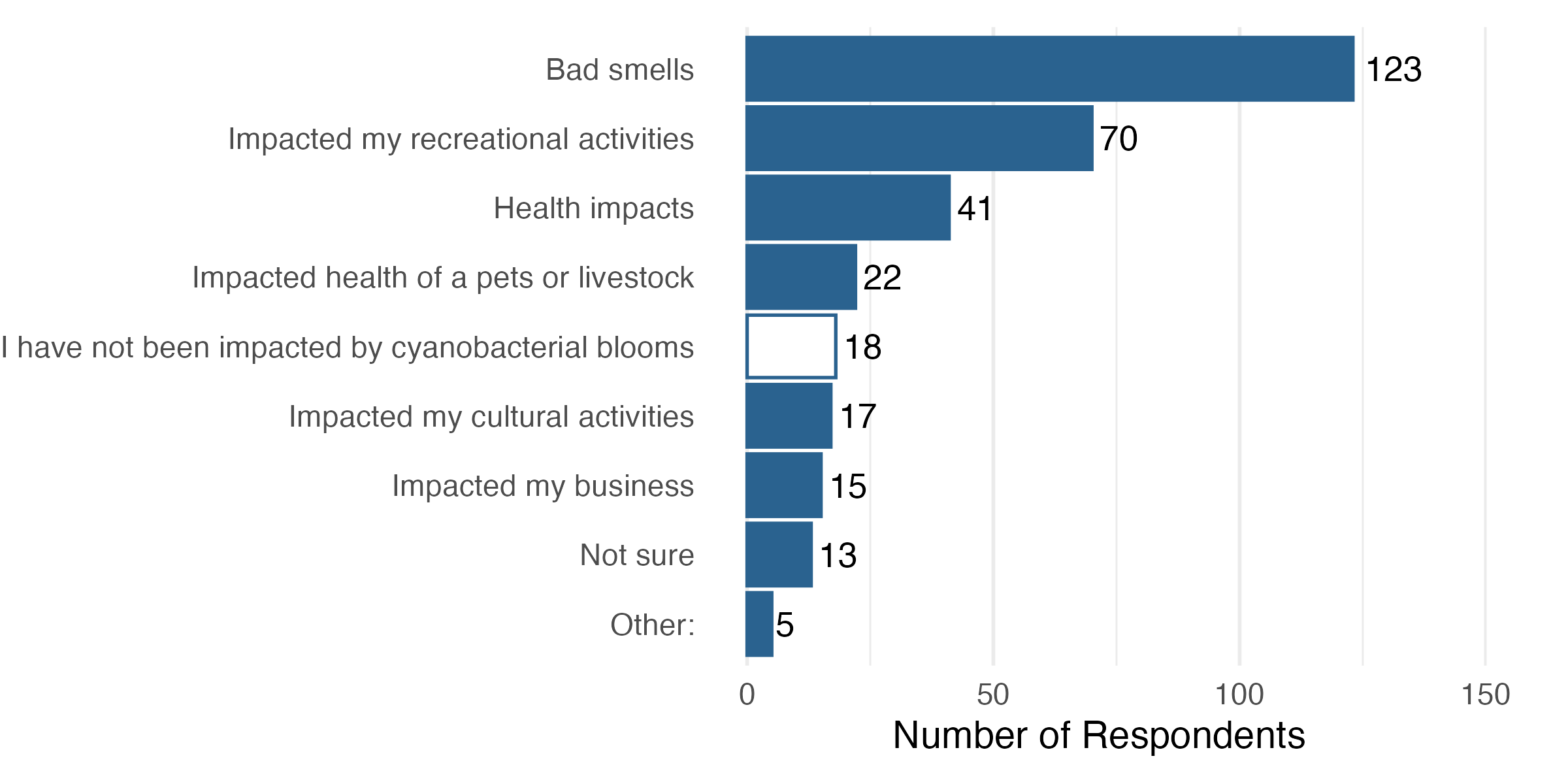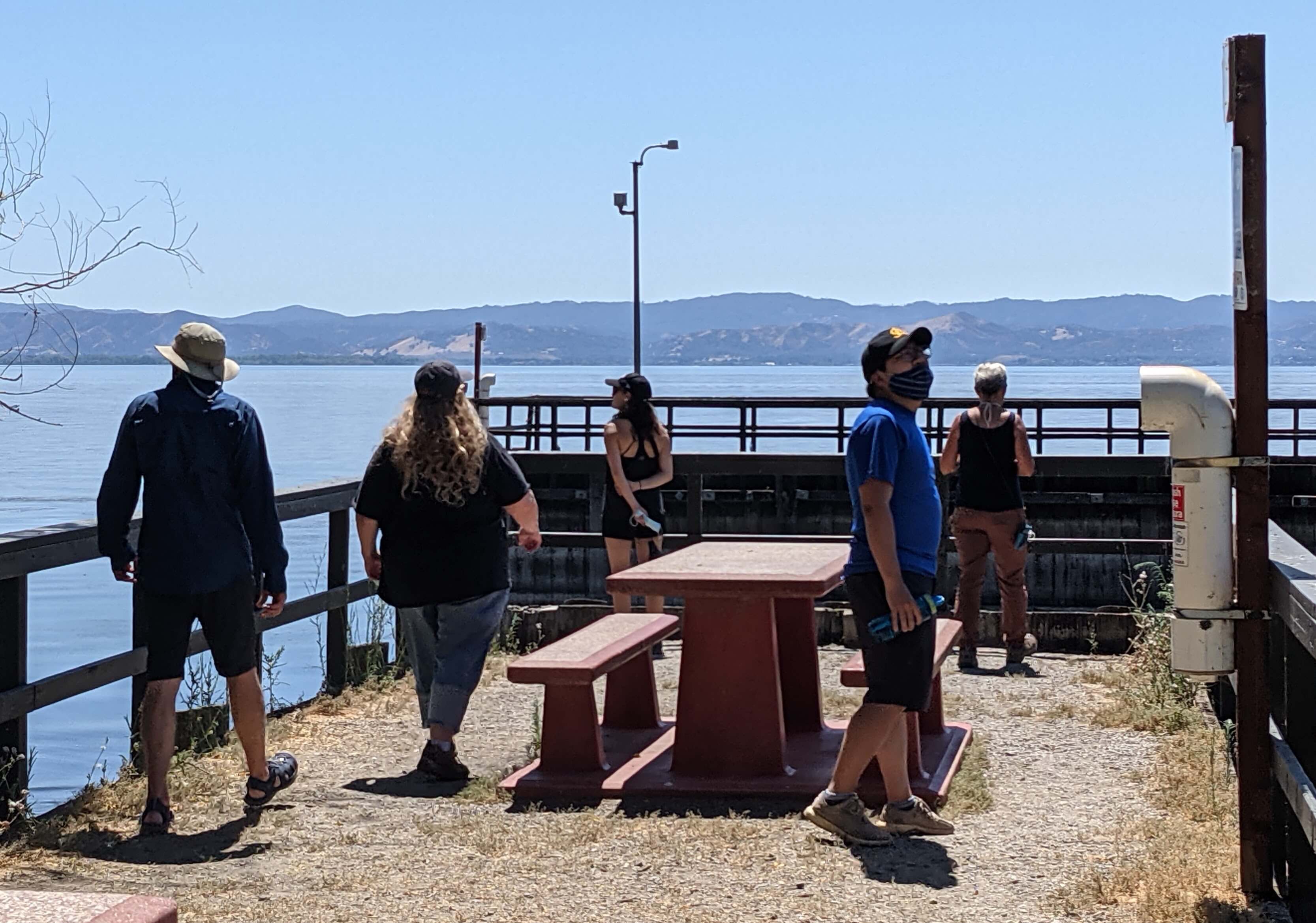About people who live, work, or recreate near Clear Lake
Clear Lake is a defining feature of Lake County, central to its economy, recreation, and cultural identity, particularly for local Tribes. However, the frequent presence of cyanobacterial blooms, also called harmful algal blooms (HABs) increases the risk of exposure and associated health impacts for those who live, work, or spend time in and around the lake and its waters.
Clear Lake is a major recreation destination for both residents and visitors, drawn by its boating, fishing, camping, hiking, and water sports. Clear Lake State Park alone has over 120,000 visitors annually.
Many residents live near the lake. The city of Clearlake has a population of around 16,600, while nearby Lakeport is home to about 5,100 residents. These populations fluctuate during the summer months, when the area sees a surge of tourists, seasonal residents, and recreationists.
Vulnerability to climate-driven events
This vulnerable population is defined by their proximity to Clear Lake, which increases risk of HABs exposure, which can have mild to severe health outcomes. Exposure can occur through various pathways:
- Drinking water- HABs toxins (cyanotoxins) in water sourced from Clear Lake can contaminate drinking water, especially for homes using private intakes or small community systems. This can results in liver damage, gastrointestinal issues, and potential long-term health risks. These toxins are not regulated in drinking water.
- Swamp coolers and indoor air- Homes that use untreated lake water to operate swamp coolers are at risk of aerosolizing HABs toxins into indoor air during bloom events. This can result in respiratory irritation and low-level inhalation of toxins.
- Airborne odors and aerosols- HABs can release strong odors and airborne particles containing toxins, which cab impact anyone on or near the lake, particularly people with asthma or other respiratory issues. This can result in headaches, nausea, respiratory symptoms, and stress from persistent foul smells.
- Contact during recreation, work, or cultural activities- Direct skin contact with contaminated water can occur through swimming, boating, fishing, agriculture, shoreline maintenance, and Tribal cultural activities during a bloom. This can result in rashes, eye irritation, and accidental ingestion leading to more serious illness.
- Consuming contaminated fish and shellfish- People who eat fish and shellfish from Clear Lake may be exposed to HABs toxins in fish and shellfish tissues. Ongoing consumption of HABs toxins may result in liver and neurological effects.
The cumulative social and economic stress related to persistent HABs- which can degrade water quality, lower property values, reduce tourism, and harm livelihoods- can also result in mental health stress and financial strain.
Who works with this community
A wide range of organizations work with this population, supporting health, water safety, recreation, and economic well-being. Tribal governments like Big Valley Rancheria are key leaders in HAB monitoring and environmental stewardship. Local water districts and the State Water Board manage public water systems and regulate or assess drinking water quality. Recreational access is supported by Lake County Public Services Department, while organizations like the Chamber of Commerce helps local businesses and tourism adapt to environmental challenges. Nonprofits and community groups also play a role in education, public outreach, and resilience.
Highlights from the CHARM surveys and interviews
Selected survey findings
- A large majority of respondents (82%) agreed or somewhat agreed that HABs have increased over time, while very few disagreed (1%), suggesting strong community awareness of worsening bloom conditions.
- Almost all respondents reported at least one experience of HABs in Lake County. The most commonly reported impacts of HABs were bad smells (53%), limits on recreational activities (30%), and health effects (18%), while only a small share of respondents (8%) reported not being impacted at all.

- When asked about alerts for HABs events, the most preferred ways to receive notifications were signage at bloom sites (59%), online news sources (52%), flags at bloom sites indicating conditions (47%), and alerts from LakeCoAlert (42%). Facebook (29%) and Big Valley Rancheria or Tribal websites (19%) were also selected by some, indicating that while many prefer official or on-site notifications, a portion of respondents still rely on online and community-based digital sources.
- While only 17% of respondents reported that their tap water came from a well or intake drawing from Clear Lake (n = 33), 30% of those respondents said their drinking water had been impacted by harmful algal blooms, and 43% expressed that they were fairly or very concerned about HABs contaminating their drinking water.
Community voices
"After swimming in the lake I've gotten dizzy, from my ears - got infected...We usually go to Kelsey Creek, but I've noticed since the temperatures have risen and the water levels have dropped, there's more algae clinging and forming on top of the water."
"We'll just smell it. You can smell it in the air. We're less than a block away from the canals. So yeah, certain parts of the seasons, it can get really stinky."
"It's not really sickness, but it's like a rash...all rash on my body, my niece and nephew get it also...I'd have to make sure I had a shower after, if not, I'd get a rash, like, all over my body."
"I don't know that I was talking to my cousin who who lives right on the lake, and he said it's really bad this year. And he said that lot of some animals die from it."
"So when I'm by my swamp cooler, turn the green button on, and that's to pull the water on to spray the sides, yeah I can smell it. I smell the water. And I'm like, Ooh, I smell that water. It smells like the lake."
Building resilience for people who live, work, or recreate near Clear Lake
HAB-safe recreation
- Clearly mark high-risk areas with warning signs and ADA-accessible notices.
- During blooms, inform users when and where it's unsafe to swim, boat, or fish; direct to alternative locations if possible.
- Train park staff, campgrounds, and tour operators to educate visitors about HABs and to identify HABs symptoms.
Outreach in multiple languages and formats
- Provide real-time alerts via signs, websites, social media, and text notifications about HAB presence, risks, and safe behaviors. During overlapping HAB and heat periods, provide specific messaging about risks of cooling off in the lake and promote use of resilience centers.
- Conduct culturally relevant outreach and education about HABs through Tribal organizations, schools, and community groups to reach diverse audiences.
- Distribute HAB exposure prevention guidance in multiple languages, focusing on children, elders, Tribal communities, and outdoor workers.
Assistance for households using swamp coolers or private wells
- Provide support for private well owners and small systems to test and treat water, especially in rural and underserved areas. Offer financial assistance or filtration equipment for low-income residents relying on private lake water.
- Explore feasibility of retrofitting swamp coolers or promote alternatives to reduce indoor exposure from contaminated lake water.

